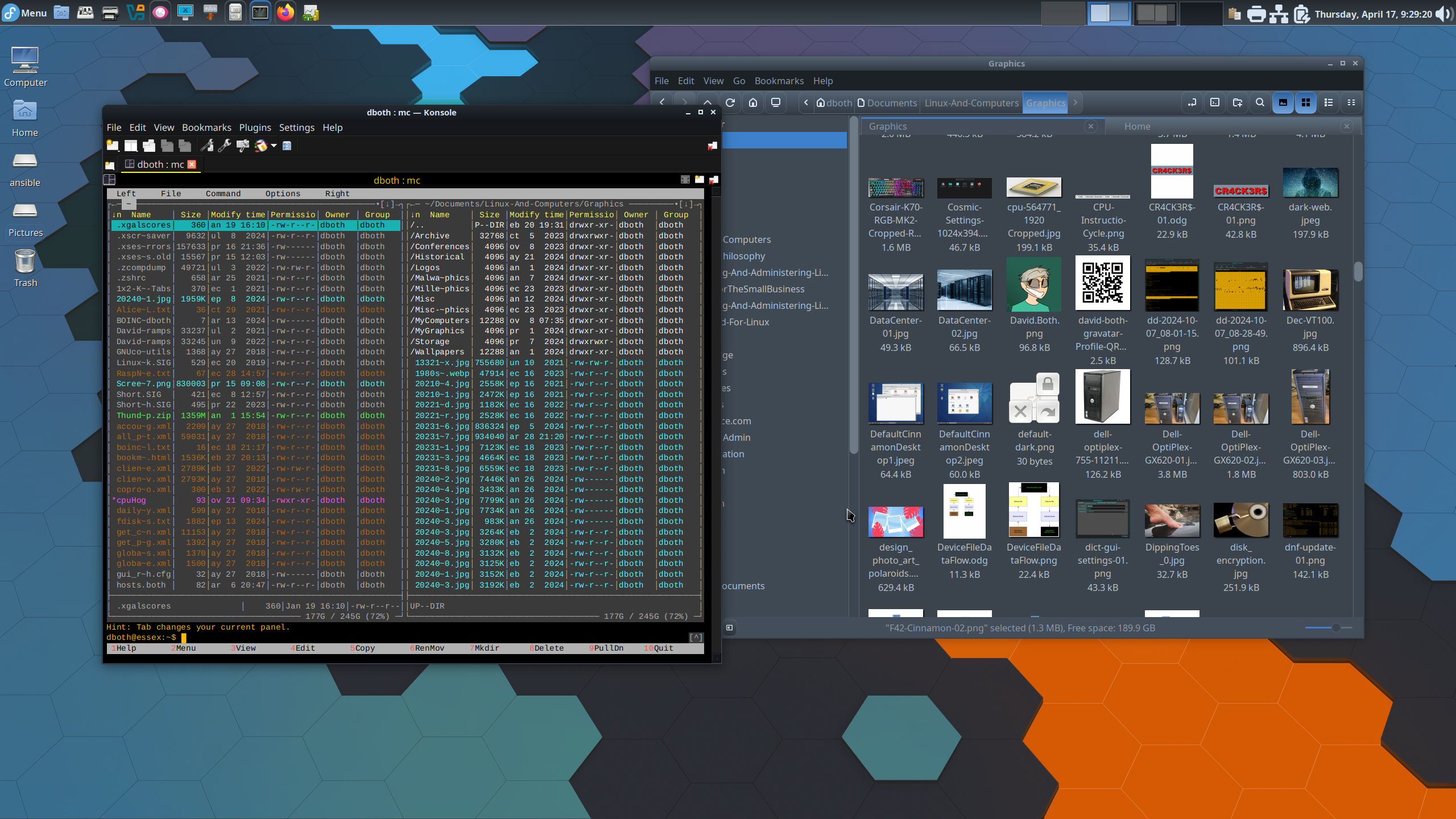
My first impressions of Fedora 42
You might be aware that I upgraded all of the Both.org systems over the last two days, moving from F41 to F42. That process was completed yesterday afternoon and Fedora 42 is now powering all our computers. I apologize if that caused any inconvenience for you, but I like to update and upgrade my systems as soon as possible. In that process, I get a decent first look at the new release, so I’ll give you my first impressions.
The upgrades
Upgrading Fedora is easy with the DNF system-upgrade tool. You can find the complete procedure to perform Fedora upgrades in my article, “How to upgrade your Fedora Linux system to the latest release with DNF system-upgrade.”
The first thing I learned when doing these release-level upgrades is that the upgrades went very smoothly on all 10 of my Fedora hosts. I didn’t encounter any difficulties or problems. Only three of those hosts are used to support Both.org directly, the one I use as the firewall and router, the server itself, and my primary workstation.
On Wednesday I started with my primary workstation, as I always do. The upgrade took about 40 minutes and went without a problem. I spent a couple hours verifying that all the normal tasks I do worked as expected, which they did. I think that upgrading my own workstation first is the best way to tell if there are any gotchas in a new release, since it’s the system I use most.
I then upgraded the other 7 hosts that aren’t used to support Both.org, and those also went well.
Wednesday afternoon I upgraded the server. The upgrade was fine but the HTTPD server didn’t start right away. It sometimes takes a minute after a reboot for that to get fully started and to begin serving pages. I let that run until Thursday in case any hidden server problems made themselves know. None did.
On Thursday, I upgraded the firewall / router. That also encountered no problems.
First use
My first actual use of Fedora 42 was from my workstation. My login screen and backgrounds didn’t change because I like to use ones that are not configured as the defaults. On a couple systems that still use the default wallpapers, the new F42 background displayed. It’s a country scene in cartoon style with a little valley and trees, a stream, and a bridge in the near distance. There’s an interesting little Easter egg that you shouldn’t have any trouble finding.
After logging in, everything looked — well — exactly the same. I used both Xfce and my current favorite desktop, Cinnamon, and there are no visual changes at all. Well, except for the backgrounds if you still use the defaults.
Everything looks and works as it did before. With one exception.
I use the screen program to add flexibility to my terminal sessions and the status line at the bottom of a screen session provides information about which session I’m in, the hostname, date and time, and more if I were to configure it. The upgrade no longer correctly parses the /etc/screenrc configuration file. It doesn’t affect the use of the screen program, but it is an annoyance because doesn’t provide the data I want.
So I’ll need to rebuild the status line at some point. In the meantime, I changed to one that I know works. I commented out all the caption and hardstatus lines in the /etc/screenrc file. I then uncommented the following line.
caption always "%{wk}%?%-Lw%?%{bw}%n*%f %t%?(%u)%?%{wk}%?%+Lw %=%{mk}@%H %{yk}%D %{ck}%M%{wk} %{ck}%d %{gk}%c"You can read about changing the screen status line in the embedded link.
Documentation
There is a large and excellent set of documentation for Fedora and upgrading. Be sure to use this official documentation before doing web searches. Most of what you’ll need is right there. If you want to install Fedora on your computer or just try it for the first time without installing it, download a Live Image from the Fedora Project.